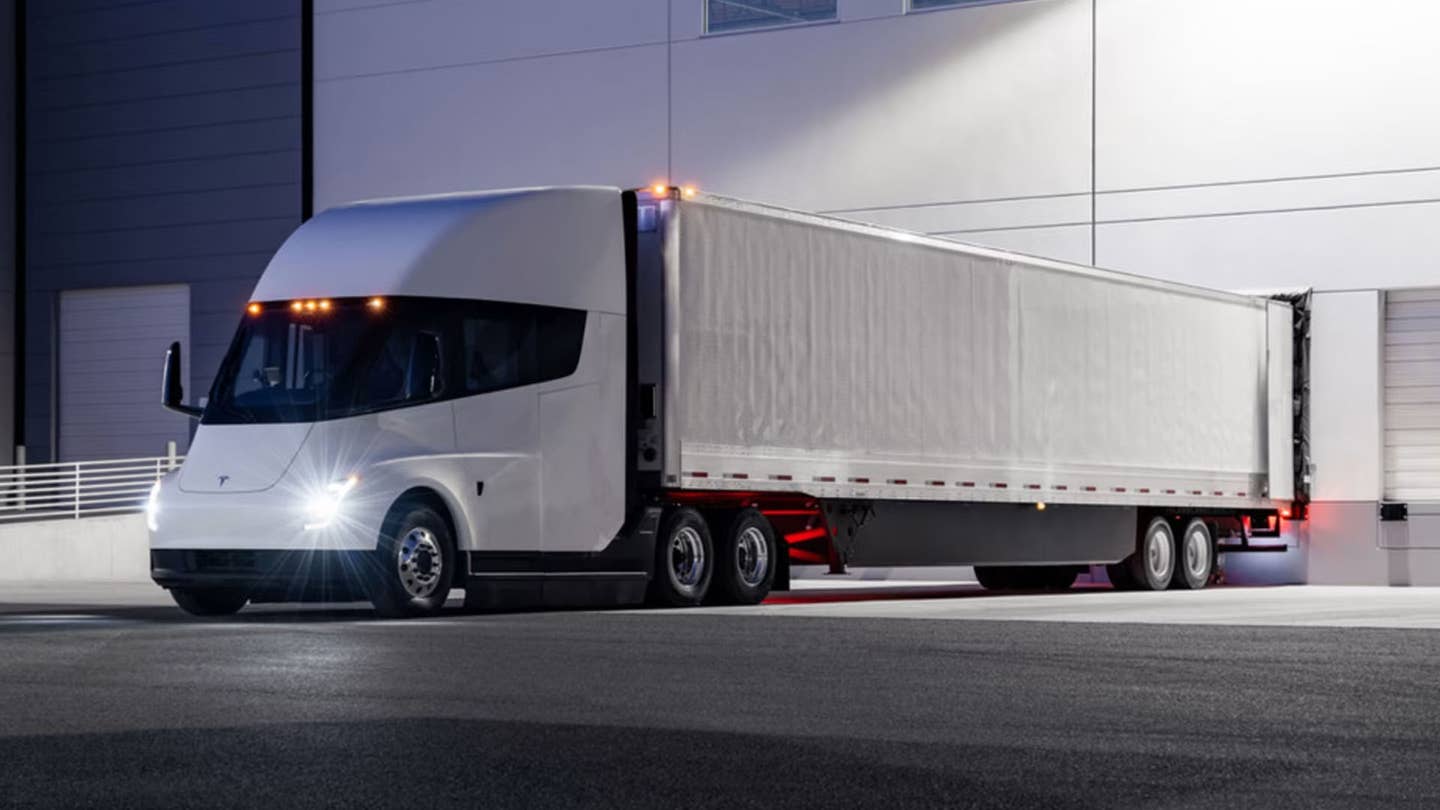There will be less stringent emissions regulations in the meantime, but a date has been agreed to by huge industry players.

After months of negotiations between the California Air Resources Board and industry leaders, a deal has been struck to make sure 18-wheelers, garbage trucks, and delivery vans emit zero harmful emissions by the middle of the next decade. Reports claim that automakers and powerful industry groups like the Truck and Engine Manufacturers Association agreed to the rules, avoiding a drawn-out legal battle.
Among those who agreed to the deal is diesel engine giant Cummins, as well as automakers Ford, General Motors, and Daimler, the latter of which just merged with Toyota’s trucking division.
A battery-powered Tesla semi-truck. Tesla
California is the largest market for such vehicles, and because the deal was negotiated as a part of CARB, a number of other states will effectively be adopting the rules as well, as the Washington Post reports. Currently, every west coast state is a CARB member, as well as many east coast states except New Hampshire, and others south of the Mason-Dixon line.
The deal loosens the pressure on the industry to clean up their emissions in the meantime, ahead of 2036. CARB had a set of stringent regulations in mind that it wanted to enact in 2024, which groups like TEMA were lobbying hard against. Those have been scrapped in favor of federal EPA rules, which are not as ambitious.
Slashing emissions from heavy trucking is a nuanced challenge, but many companies are making progress. Hydrogen is seen as a key enabler of the green transition due to its quick refueling potential as well as other strengths. General Motors, Toyota, and others are working hard on the technology to enable its use in big rigs. Electric vehicles will also play a part, although the massive batteries needed to produce the machines are extremely harmful to the environment. The battery in Tesla’s electric semi-truck, for instance, is likely in the neighborhood of 900 kilowatt-hours, which is incredibly large. A Chevy Bolt, for instance, has a 65-kWh battery.
A Toyota-developed hydrogen fuel cell intended for heavy trucks. Toyota
The biggest challenge for both of these technologies will be infrastructure. The state of hydrogen refueling is laughably bad, with major investment necessary to make hydrogen-fueled commercial vehicles viable in the near term. Likewise, the amount of electricity needed to recharge something like Tesla’s semi-truck is truly incredible. Capacitor-like buffer stations will be necessary to give the trucks the juice they need, and these stations are not simple or inexpensive.
CARB and major industry players think it’s possible to get this all squared away by 2036. With 13 years to get the ball rolling, let’s hope they’re right.
Got tips? Send ’em to tips@thedrive.com

